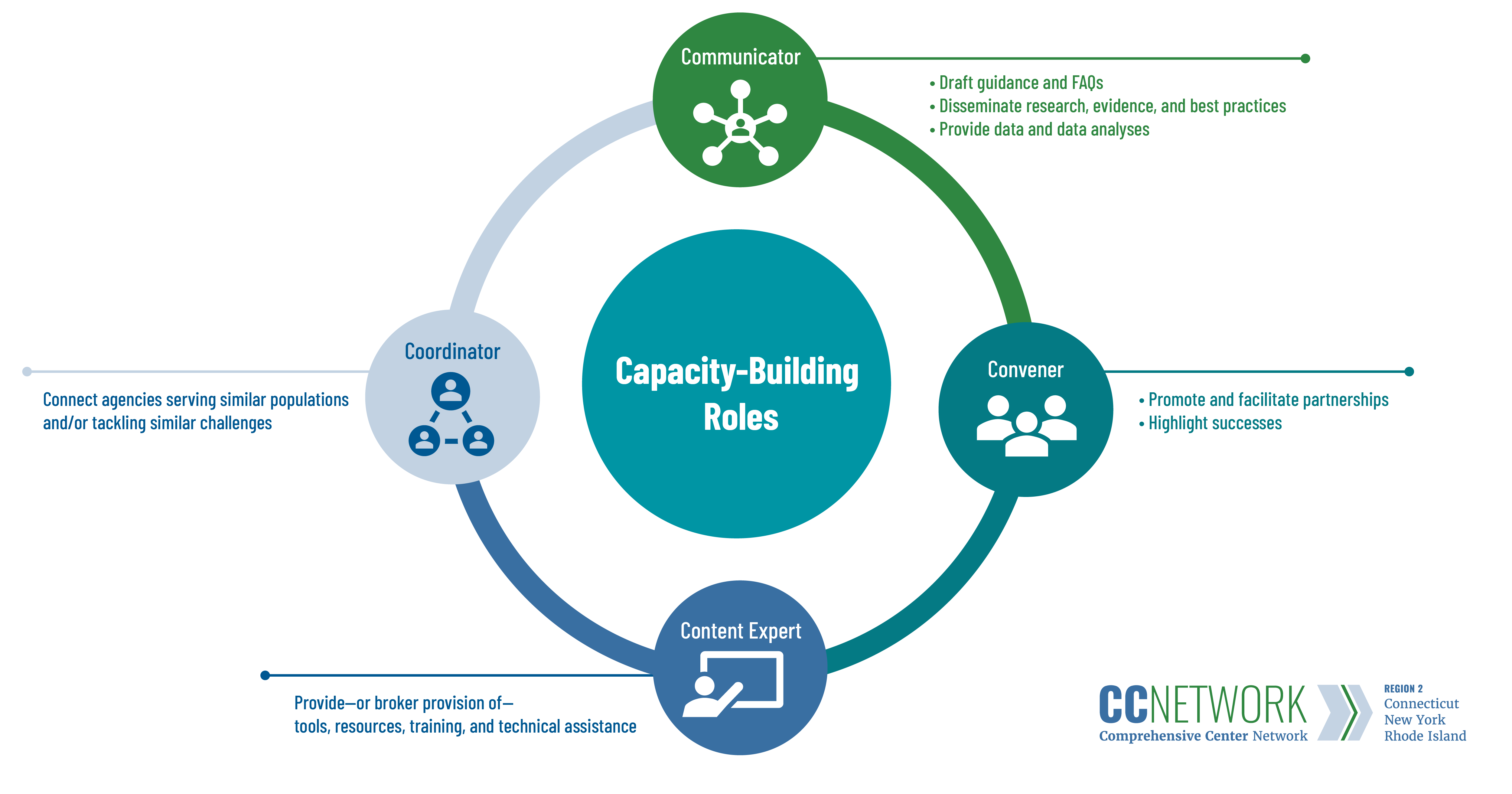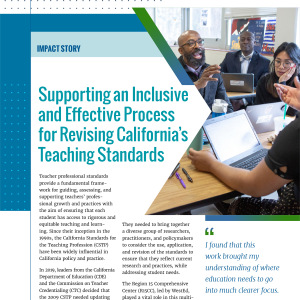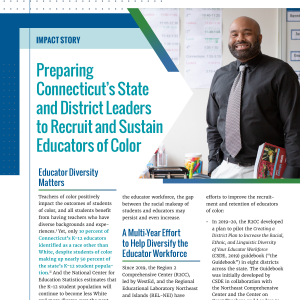How States Are Building District Capacity to Overcome Teacher Shortages (Part I)
Posted on

Learn what state education agencies in California, Connecticut, Nevada, New York, and Rhode Island are doing to increase the ability of their school districts to effectively recruit and retain teachers, particularly teachers of color and those in rural areas.
Last month, the blog post How States Play a Key Role in Strengthening the Teacher Workforce, mentioned that Regional Comprehensive Centers 2 and 15 have compiled short descriptions of current state-level teacher workforce efforts underway in the states they cover. In this post, we provide the first set of those “snapshots,” grouped by the particular role the state is playing in each case to build school district capacity through providing technical assistance. In this issue, we focus on “conveners of groups of districts with common needs” and “communicators of mission-critical data.” These first two categories of the “4 C’s” are approaches that state education agencies (SEAs) nationwide could consider.

Conveners of Groups of Districts with Common Needs
The Region 15 Comprehensive Center is helping the California Department of Education facilitate a “Diversifying the Educator Workforce Community of Practice” to proactively connect county offices of education with local education agencies (LEAs) so that they can jointly problem-solve and harness the power of evidence-based strategies and tools. Together, these entities review and select evidence-based policies, practices and tools, and processes being used elsewhere to develop actionable plans. Each meeting includes an expert researcher presenting research and a member sharing ideas in action. Researcher topics have included root causes of the lack of educator diversity, a framework of domains to achieve racial equity, qualitative and quantitative measures to facilitate targeted inquiry into district data, and effects of dual enrollment on college access. Among other actions, members are considering building partnerships between county offices of education, institutions of higher education, and LEAs; implementing dual enrollment; leveraging California’s community colleges; and building a K–16 teachers of color pathway, grow your own program, and affinity group.
Communicators of Mission-Critical Data
SEAs across the Northeast (CT, MA, ME, NH, NY, RI, VT) are collaborating to address educator workforce challenges—including teacher shortages. Through the “Regional Collaborative for Strengthening the Educator Workforce” facilitated by the R2CC in partnership with the R1CC, led by the American Institutes for Research, SEA teams identified a common problem of practice: collecting, analyzing, and leveraging educator workforce data to drive decision-making. To address this, the Collaborative is holding a series of virtual cafés aimed at building SEA teams’ capacity to gather and use data to inform policy and program decisions and to support LEAs with selecting strategies that fit their local contexts.
At the request of the Nevada Legislature, the Nevada State Teacher Recruitment and Retention Advisory Task Force (Task Force), facilitated by the Nevada Department of Education (NDE), is preparing a slate of recommendations to combat the teacher shortage. Among the recommendations the Task Force is preparing for the legislature’s consideration are (a) gathering key state and national trend data regarding teacher supply and demand and (b) researching evidence-based recruitment and retention practices. R15CC is supporting the NDE in analyzing data, identifying root and contributing causes of teacher shortages, and identifying gaps in Nevada’s teacher data system. The Task Force is simultaneously monitoring teacher exit and working condition surveys, class size, mentoring, and induction data. Ultimately, the NDE intends to develop and deploy statewide teacher exit and educator working conditions surveys. Additionally, the NDE will develop evidence-based guidance and resources to inform district and school mentoring and induction approaches aimed at retaining teachers and leaders. Andrew Morrill, a former high school English teacher of 17 years who now leads R15CC’s support for NDE, notes that the Task Force is bringing forth the perspective of Nevada’s teachers on issues related to recruitment and retention challenges.
Stay tuned next month for more examples of how states are building district capacity to overcome teacher shortages.
For additional state–comprehensive center partnership efforts to tackle the teacher shortage, visit the National Comprehensive Center “Educator Workforce” highlights.
The Regions 2 and 15 Comprehensive Centers work with SEAs and their regional and local constituents in Arizona, California, Connecticut, Nevada, New York, Rhode Island, and Utah to improve outcomes for all children and better serve communities through capacity-building technical assistance, content expertise, and other services.
The contents of this blog post were developed under a grant from the Department of Education. However, the contents do not necessarily represent the policy of the Department of Education, and you should not assume endorsement by the federal government.


